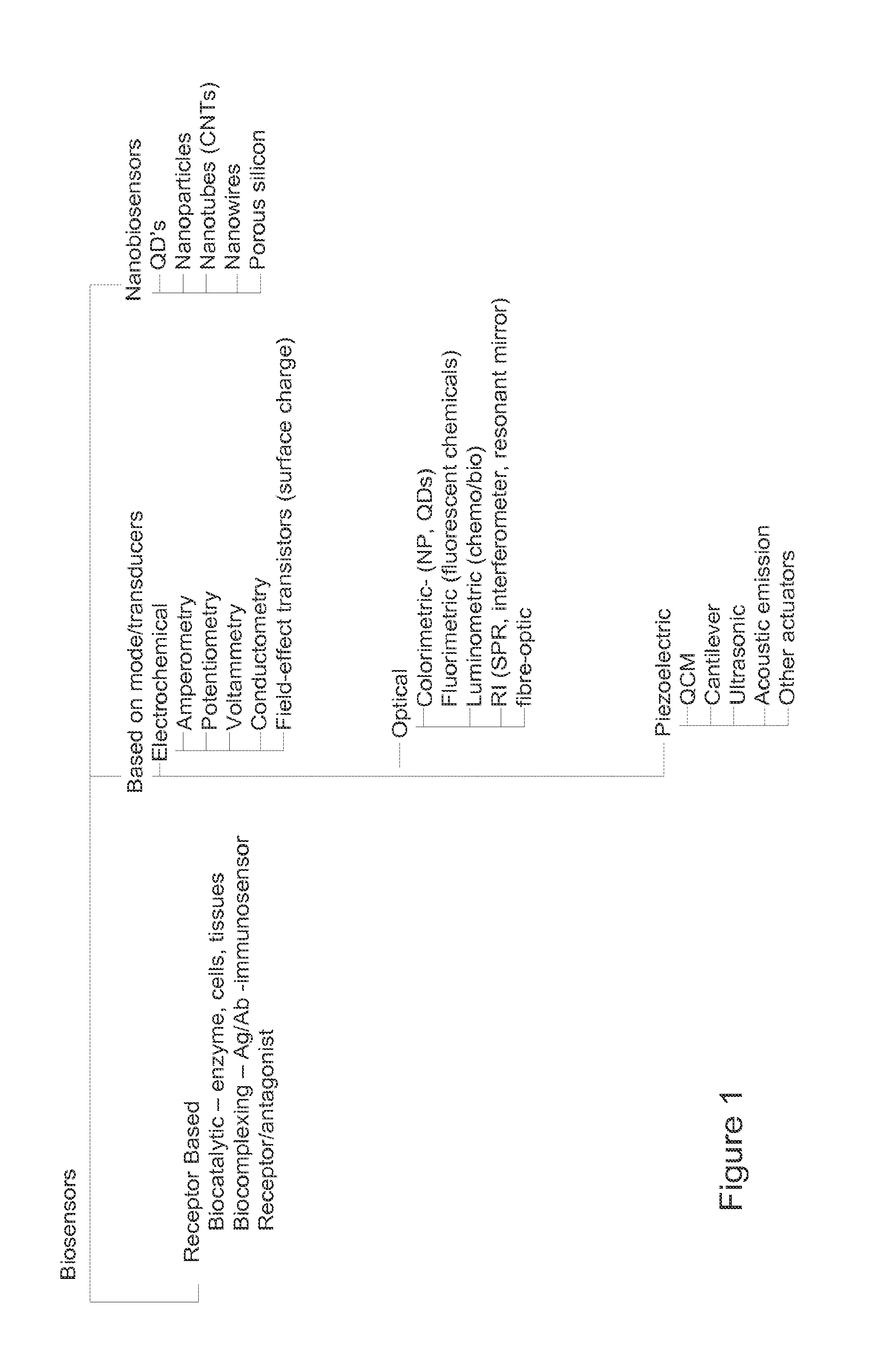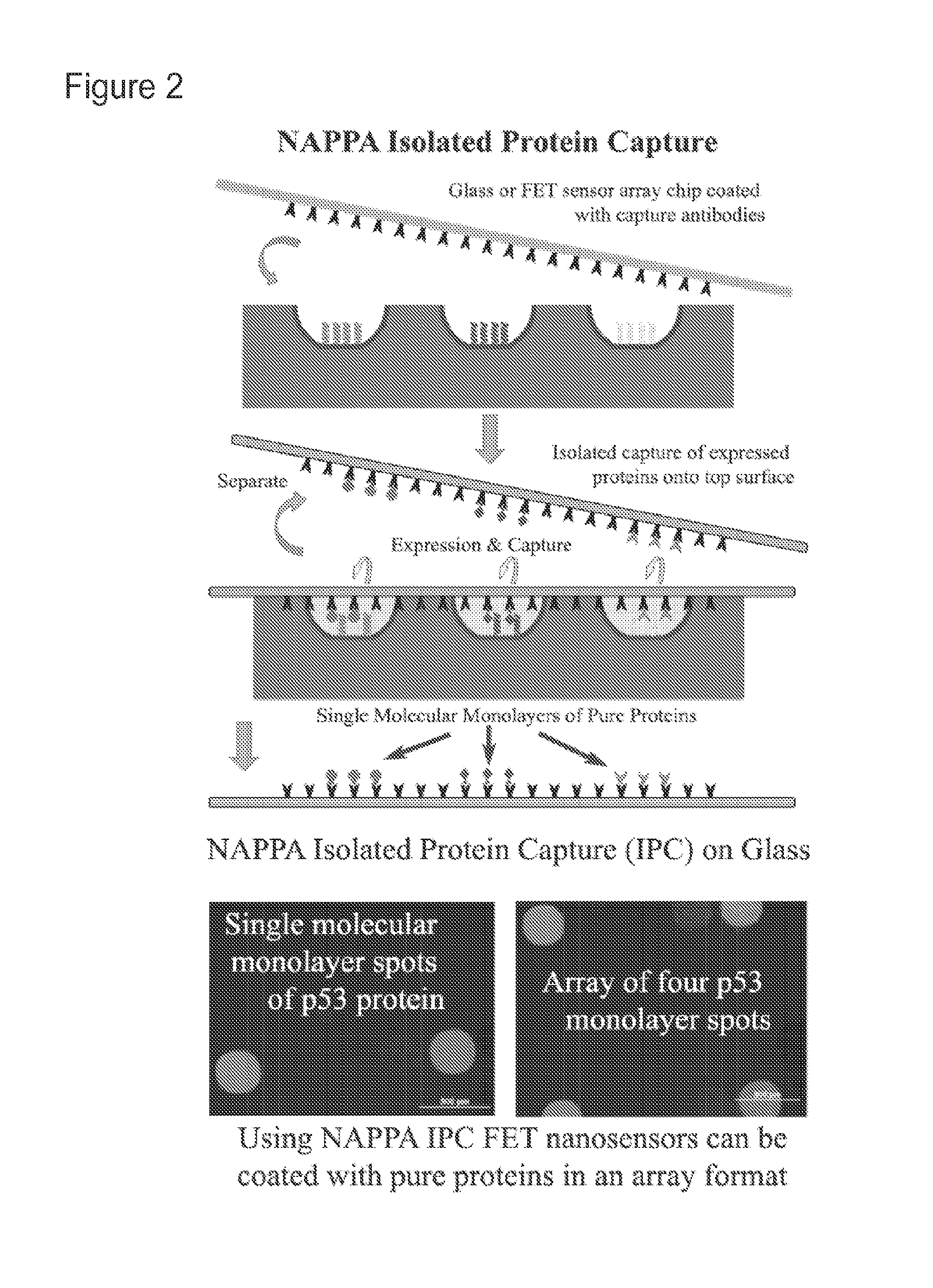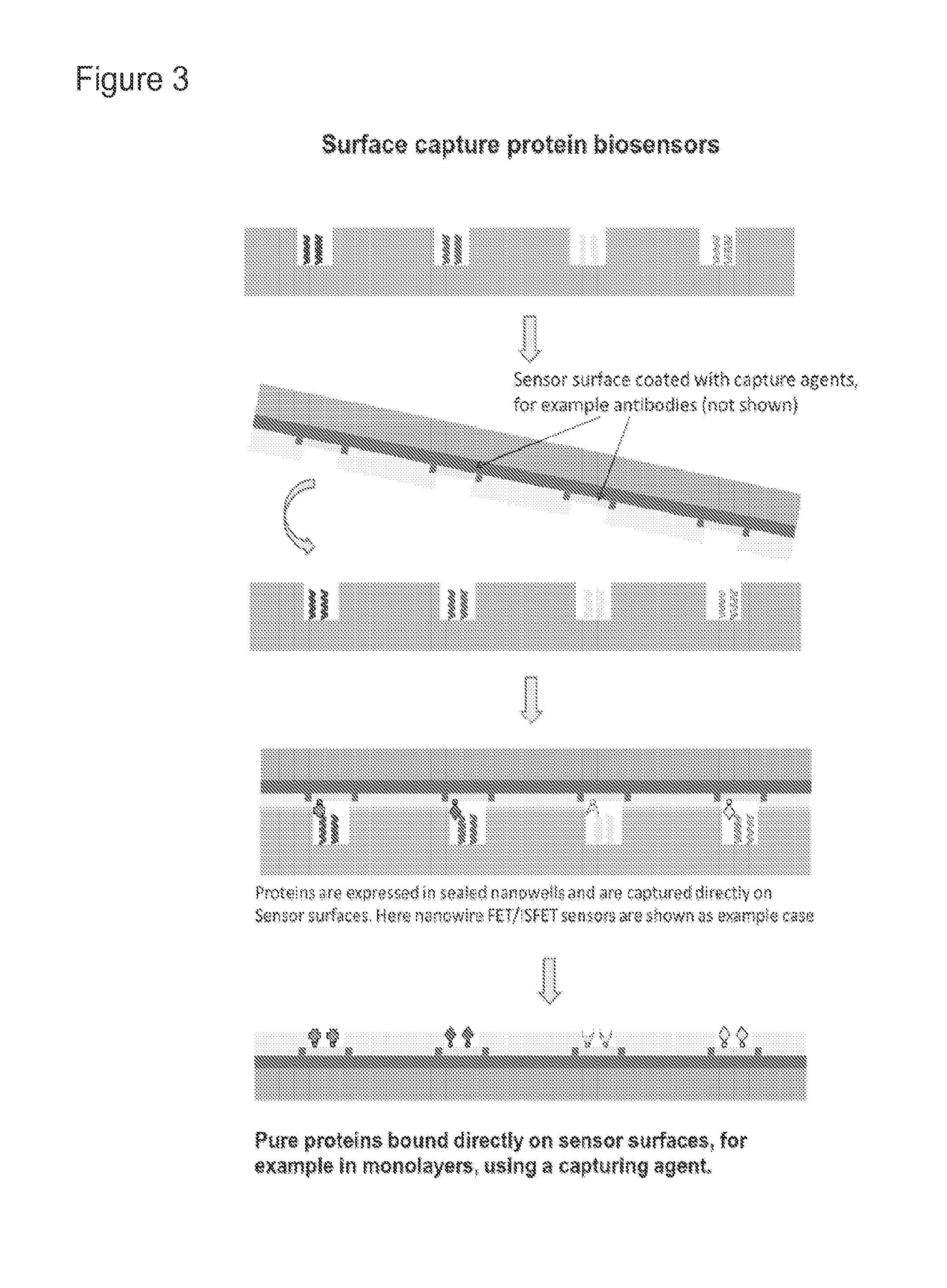Biosensor microarray compositions and methods
a biosensor and microarray technology, applied in the field of biosensor microarray compositions and methods, can solve the problems of unable to meet the challenges and quality demands of protein based biosensor generation, and the loss of 3d-conformation dependent functionality
- Summary
- Abstract
- Description
- Claims
- Application Information
AI Technical Summary
Benefits of technology
Problems solved by technology
Method used
Image
Examples
example 1
Immunoscreening or Antibody Profiling Using Isolated Protein Capture Sensor Arrays (Prophetic)
[0098]An exemplary method of application of protein biosensors disclosed in this application is immune (auto-immune) signature screening or antibody profiling for disease diagnostics and prognostics. Other than antibody profiling, the “disease-ome” and “cancer-ome” biosensors can be used for affinity profiling and interaction profiling (see, e.g., FIG. 12).
[0099]For example, genes from tumor cell lines (all genes or specific subset of genes) in breast cancer patients (single patient or multiple patients) can be expressed using a NAPPA-IPC method and resulting tumor proteins / antigens can be captured directly on the device surface (or alternately on secondary surfaces). In this way hundreds to thousands of tumor proteins specific to breast cancer can be produced directly (or in proximity) of sensor devices in an array format. This can be done in a single in-situ expression step, in fairly str...
example 2
Use of an Antibody Profiling Sensor (Prophetic)
[0105]Blood or serum or body fluid or cell extract or tissue extract or biopsy sample of interest, acquired from test patient, will be treated / mixed with magnetic nanoparticles or beads coated with anti-human secondary antibodies (usually used as secondary antibodies, prepared in any host) for a brief period of time. This results in binding of all antibodies present in the test fluid to be captured on to the magnetic particles, which can then be separated out from test fluid in multiple wash steps. Alternately the magnetic beads can be coated with antibody capture agents such as chemical linkers, mix&go coating, bio-conjugates etc. The antibodies captured on the magnetic particles can then be separated / diced / dissociated chemically or enzymatically from the magnetic particles, and the resulting pure antibody solution can be assayed with protein sensor array chips—to detect antibodies specific to the disease, aiding disease diagnosis and ...
example 3
Protein-Protein Interaction Profiling (Prophetic)
[0106]Proteome sensor arrays (as described above) can be used for protein interaction profiling, measuring interaction of sensor bound proteins with proteins in patient samples such as blood or serum or body fluid or cell extract or tissue extract or biopsy sample. Proteome biosensor chips are produced by expressing all or a subset of naturally occurring human proteins, including post translational modified proteins. Similar to antibody profiling described above, disease-ome / cancer-ome biosensors can also be used to perform protein-protein interaction profiling by sensing and measuring interaction of proteins in patient samples with sensor bound disease proteins.
[0107]Protein-protein interactions are very specific and selective in nature, and hence interaction signature will be unique to diseases, cancers. While DNA interactions are linear in nature to a large extent, protein interactions are multidimensional. Proteins assume multiple...
PUM
| Property | Measurement | Unit |
|---|---|---|
| molecular weight | aaaaa | aaaaa |
| molecular weight | aaaaa | aaaaa |
| threshold voltage | aaaaa | aaaaa |
Abstract
Description
Claims
Application Information
 Login to View More
Login to View More - R&D
- Intellectual Property
- Life Sciences
- Materials
- Tech Scout
- Unparalleled Data Quality
- Higher Quality Content
- 60% Fewer Hallucinations
Browse by: Latest US Patents, China's latest patents, Technical Efficacy Thesaurus, Application Domain, Technology Topic, Popular Technical Reports.
© 2025 PatSnap. All rights reserved.Legal|Privacy policy|Modern Slavery Act Transparency Statement|Sitemap|About US| Contact US: help@patsnap.com



